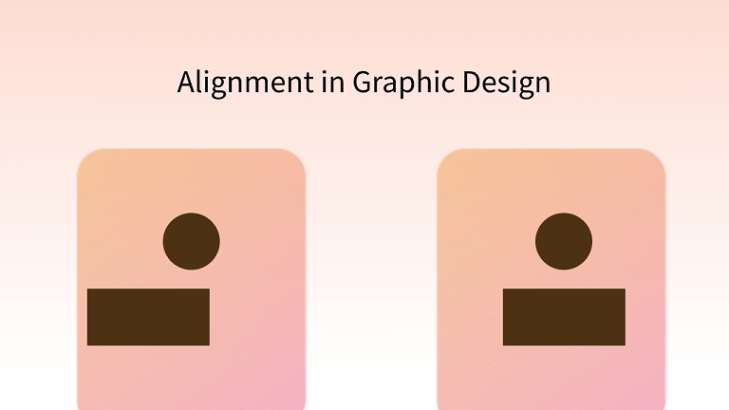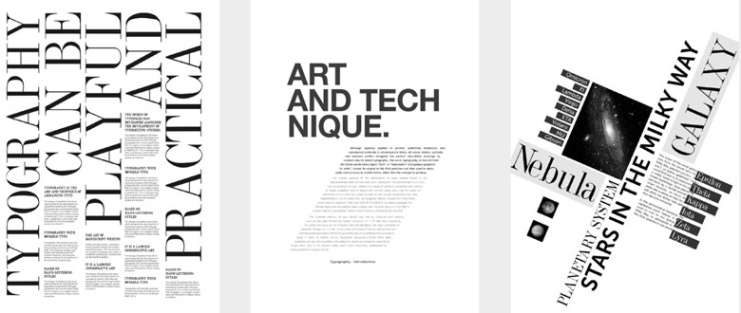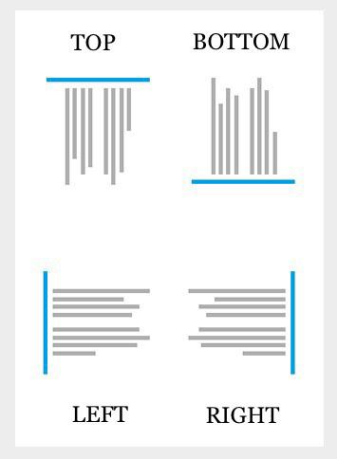Mastering Alignment: The Key to Perfect Design!
In the world of design, one of the most important principles to master is alignment. It may seem like a simple concept, but the impact of proper alignment on the overall aesthetics and functionality of a design cannot be overstated. From creating balanced layouts to ensuring clear communication, alignment plays a crucial role in the success of any design project.
![alignment design principle Niche Utama 2 Design Dictionary Venngage Alignment [Design Principle Definition] alignment design principle Niche Utama 2 Design Dictionary Venngage Alignment [Design Principle Definition]](https://kombinasibisnis.biz.id/wp-content/uploads/2024/07/niche-utama-2-design-dictionary-venngage-alignment-design-principle-definition.jpg)
Image Source: amazonaws.com
Alignment is all about organizing elements in a visually pleasing and harmonious way. When elements are properly aligned, they create a sense of order and coherence that makes the design more appealing to the eye. Whether it’s text, images, or other visual elements, aligning them correctly can make a design feel polished and professional.
But alignment is not just about making things look pretty. It also serves a functional purpose by helping to guide the viewer’s eye through the design. By aligning elements in a logical way, designers can create a clear hierarchy that directs the viewer’s attention to the most important information. This makes it easier for the viewer to navigate the design and understand its message.

Image Source: pixso.net
One of the key aspects of mastering alignment is consistency. Consistent alignment throughout a design creates a sense of unity and cohesion that ties the design together. Whether it’s aligning text along a grid, lining up images along a common axis, or ensuring that margins and padding are consistent, maintaining alignment consistency is essential for creating a polished and professional look.
Another important aspect of alignment is balance. Balancing elements within a design helps to create a sense of stability and harmony. By distributing elements evenly and aligning them in a way that feels visually pleasing, designers can create a sense of equilibrium that makes the design more visually appealing.

Image Source: 254-online.com
Alignment also plays a crucial role in creating a sense of rhythm and flow within a design. By aligning elements in a way that creates a natural flow from one element to the next, designers can guide the viewer’s eye through the design in a way that feels intuitive and easy to follow. This helps to create a sense of movement and dynamism that adds interest and energy to the design.
In addition to creating visual appeal and guiding the viewer’s eye, alignment also plays a crucial role in creating a sense of professionalism and credibility. A well-aligned design conveys a sense of attention to detail and care that can help to establish trust and credibility with the viewer. Whether it’s a website, a brochure, a logo, or any other type of design, proper alignment is essential for creating a design that looks polished, professional, and trustworthy.

Image Source: pixso.net
So how can designers master the art of alignment? One key strategy is to use grids and guides to help align elements accurately. Grids provide a framework for organizing elements in a way that feels logical and coherent, while guides can help to ensure that elements are aligned precisely. By using grids and guides, designers can create a structure that makes it easier to align elements consistently and accurately.
Another important strategy for mastering alignment is to pay attention to details. Small details like ensuring that text is aligned along a common baseline or that images are lined up along a common axis can make a big difference in the overall look and feel of a design. By paying attention to these details and making adjustments as needed, designers can create a design that feels polished and professional.
In conclusion, mastering alignment is essential for creating designs that are visually appealing, functional, and professional. By paying attention to details, maintaining consistency, and balancing elements effectively, designers can create designs that feel cohesive, harmonious, and well-organized. So next time you’re working on a design project, remember that mastering alignment is the key to perfect design!
Aligning Elements: A Guide to Flawless Layouts
In the world of design, alignment is like the glue that holds everything together. It may not be the most glamorous aspect of a project, but it is certainly one of the most important. Without proper alignment, a design can appear chaotic, disorganized, and visually unappealing. That’s why mastering the art of aligning elements is crucial for creating flawless layouts that capture the viewer’s attention and communicate a message effectively.
When it comes to alignment, there are a few key principles to keep in mind. The first is consistency. Consistent alignment creates a sense of order and cohesiveness in a design. Whether you’re working with text, images, or other elements, make sure they are all aligned in a way that is visually pleasing and easy to follow.
Another important principle is proximity. Elements that are related to each other should be grouped together and aligned accordingly. This helps to create a visual hierarchy and guide the viewer’s eye through the design. By aligning related elements, you can create a sense of connection and unity that enhances the overall composition.
Whitespace is also a crucial element when it comes to alignment. By leaving space between elements, you can create a sense of balance and harmony in your design. Whitespace can help to emphasize certain elements, create breathing room for the viewer’s eye, and prevent a design from feeling cluttered or overwhelming.
When aligning elements in a design, it’s important to consider the overall layout and composition. Whether you’re working with a grid-based layout or a more free-flowing design, alignment plays a key role in creating a sense of structure and organization. By aligning elements along a grid or other reference points, you can create a sense of order and balance that enhances the overall visual impact of your design.
But alignment is not just about placing elements in a straight line. It’s also about creating balance and harmony through the careful placement of elements. By experimenting with different alignments, you can create visual interest and movement in your design. Offsetting elements slightly, or aligning them in unexpected ways, can create a dynamic and engaging composition that captures the viewer’s attention.
Of course, alignment is not just about aesthetics. It also plays a crucial role in guiding the viewer’s eye and communicating a message effectively. By aligning elements in a logical and intuitive way, you can create a clear visual hierarchy that guides the viewer through the design and highlights key information. Alignment can help to emphasize important elements, create a sense of flow and movement, and draw the viewer’s eye to where you want it to go.
In conclusion, mastering the art of aligning elements is essential for creating flawless layouts that engage and captivate the viewer. By following key principles such as consistency, proximity, whitespace, and balance, you can create designs that are visually appealing, organized, and effective. So next time you’re working on a design project, take the time to carefully align your elements and see the difference it can make.
Harmonizing Visuals: Design Principles for Alignment
When it comes to creating visually appealing designs, one of the key principles to keep in mind is alignment. Proper alignment can make a design look polished, professional, and easy on the eyes. In this article, we will explore the importance of harmonizing visuals through the use of alignment in design.
Alignment is all about creating a sense of order and organization in a design. When elements are properly aligned, they appear as though they belong together, creating a cohesive and unified look. This helps the viewer navigate the design more easily and can enhance the overall aesthetic appeal.
To achieve harmonious visuals through alignment, it is important to consider both vertical and horizontal alignment. Vertical alignment involves ensuring that elements are evenly spaced from the top and bottom of the design, while horizontal alignment focuses on the alignment of elements along a horizontal axis.
One of the key design principles for alignment is the rule of thirds. This principle divides a design into nine equal parts using two horizontal and two vertical lines, creating a grid. Placing elements along these lines or at their intersections can create a sense of balance and harmony in the design. This technique is commonly used in photography, but it can also be applied to other design disciplines.
Another important design principle for alignment is proximity. By grouping related elements together and ensuring they are evenly spaced, you can create a sense of unity and cohesion in your design. Proximity can help guide the viewer’s eye through the design and highlight the relationships between different elements.
Consistency is also essential when it comes to alignment in design. By using consistent spacing, margins, and alignment throughout a design, you can create a sense of order and predictability that makes the design more visually appealing. Consistency helps establish a visual hierarchy and makes it easier for the viewer to navigate the design.
In addition to vertical and horizontal alignment, designers can also utilize other techniques to harmonize visuals in their designs. Grid systems, for example, provide a framework for organizing elements on a page and can help maintain alignment and consistency throughout a design. Grid systems can be simple or complex, depending on the needs of the design.
Whitespace, or negative space, is another important element to consider when harmonizing visuals through alignment. Whitespace helps create breathing room in a design and can enhance the visibility and impact of key elements. By strategically using whitespace, designers can draw attention to important parts of the design and create a more balanced composition.
Alignment is not just about making elements line up perfectly; it is about creating a sense of harmony and coherence in a design. By utilizing design principles for alignment, designers can create visually appealing designs that are easy to navigate and understand. Proper alignment can elevate a design from good to great and can make a lasting impression on viewers. So next time you are working on a design project, remember the importance of harmonizing visuals through alignment.
Unlocking the Art of Alignment in Your Designs
The art of alignment is a crucial aspect of design that often goes unnoticed but plays a significant role in creating a visually appealing and harmonious composition. In the world of design, alignment refers to the arrangement of elements in a way that creates a sense of order and unity. It is about creating a visual connection between different elements on a page, establishing a hierarchy, and guiding the viewer’s eye through the design.
When it comes to unlocking the art of alignment in your designs, there are a few key principles to keep in mind. The first principle is consistency. Consistency in alignment helps to create a sense of coherence and organization in a design. When elements are consistently aligned, it creates a sense of order and balance that is pleasing to the eye.
Another key principle is proximity. Proximity refers to the grouping of related elements together, which helps to establish a visual connection between them. By aligning elements that are related in close proximity to each other, it creates a sense of unity and harmony in the design.
Additionally, balance is an important aspect of alignment. Balance in design refers to the distribution of visual weight in a composition. By aligning elements in a way that creates a sense of equilibrium, it helps to create a visually pleasing and harmonious design.
Furthermore, alignment can also be used to create a sense of emphasis and hierarchy in a design. By aligning certain elements in a way that draws attention to them, it helps to guide the viewer’s eye through the design and create a focal point.
In order to unlock the art of alignment in your designs, it is important to pay attention to the details. This means being mindful of the spacing between elements, the placement of text and images, and the overall balance of the design. By being intentional with your alignment choices, you can create designs that are not only visually appealing but also effective in communicating your message.
One way to practice the art of alignment in your designs is to start by sketching out your layout before diving into the digital realm. By sketching out your design on paper, you can experiment with different alignment options and see what works best for your composition. This allows you to play around with different alignment choices and find the perfect balance for your design.
Another helpful tip for unlocking the art of alignment in your designs is to use grid systems. Grid systems provide a framework for aligning elements in a design, making it easier to create a sense of order and structure. By using a grid system, you can ensure that your elements are aligned consistently and that your design has a cohesive look.
Ultimately, the art of alignment is about creating a sense of order and harmony in your designs. By paying attention to the principles of consistency, proximity, balance, and hierarchy, you can unlock the full potential of alignment in your designs and create visually stunning compositions that are both effective and engaging. So next time you sit down to design, remember to unlock the art of alignment and watch your designs come to life!
alignment design principle






